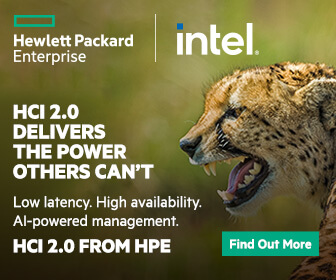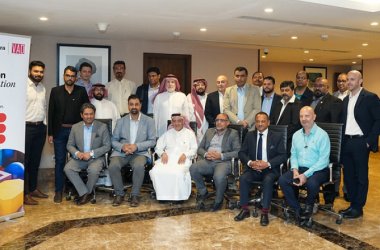Digital transformation was on every technology-powered company’s agenda pre-COVID-19, but the pandemic dramatically accelerated the pace of change. When the world went into lockdown and economies stumbled, organisations implemented core elements of three- to five-year change programs in months. In some cases, these transformations took mere days. Accelerated innovation was the norm as massive virtualisation projects became imperative to keeping organisations running.
Change can’t be put off
“Digital transformation was never optional. But most firms treated it that way, applying digital technology in dribs and drabs until COVID-19 jolted economies and forever altered the patterns of life and work and commerce. Until uncertainty and volatility became the new normal”, writes Ted Schadler, a technology analyst at Forrester and co-author of Empowered: Unleash Your Employees, Energize Your Customers, and Transform your Business.
Acceleration and innovation mean embracing “agile at scale”, explains Schadler. He adds: “Every company must respond by focusing on its core and smartly outsourcing and orchestrating the resources and innovation of cloud and service partners. With this transformation approach, CIOs can help their company scale its ability to adapt and grow into the post-pandemic era”.
He defines digital transformation as “the evolution of enterprises of all sizes toward more data-centric business models that leverage big data and analytics to improve internal workflows, products, and services as well as drive disruptive improvements in the ability to compete and open up new markets”.
Transformation is accelerating
Business in the digital ecosphere is dynamic and rapid. Leveraging new tools such as artificial intelligence allows business to respond more quickly to changes in demand and in newly identified market opportunities.
“IT has become more important than ever in providing the enabling infrastructure to support business innovation”, says Schadler, who adds: “Provisioning, performance, availability, scalability, configurability, and functionality are all impacted, and enterprises require new storage architectures and technologies to meet these requirements. Agility has also impacted consumption models, and customers are looking for more flexible ways to acquire infrastructure that include subscription-based, pay-as-you-go approaches”.
Australian pet insurance company PetSure is one such company. When the pandemic struck, there was a surge in pet ownership and adoption, leading to increased demand for their services. At the same time, PetSure needed to shift employees to a virtual office environment and support remote veterinary care with services to help curb the spread of COVID-19.
It had to do this without compromising the quality of its customer care.
Disrupt out-of-control storage expenses
HCI 2.0 platform HPE Nimble Storage dHCI enabled PetSure to deploy a virtual desktop infrastructure (VDI) solution that solved their problems. It could manage unpredictable workload volumes and provided the complex infrastructure needed to deliver fast and reliable remote access, as well as helping to control IT costs to support business continuity strategies and avoid financial strain.
“With HPE Nimble Storage dHCI, we can now provide a superior VDI solution to support changes to our business model and our 400+ employees working remotely due to COVID-19″, said Rob Collins, Head of Infrastructure and Service Management at PetSure. “In the past, we were using AWS for our VDI workloads, but the costs were too high for us. With HPE Nimble Storage dHCI, we were able to reduce our operating costs by 50 per cent, improve our performance 2X for our VDI workloads, achieve 50 per cent faster application provisioning and improve efficiency by 70 per cent”.
Pet insurance has grown by double digits in Australia in the past five years, according to PetSure. The company predicts this trajectory will continue into the next decade as pets make the shift from backyard into the home as valuable members of the family. The ‘humanisation’ of pets has also led to an increase in conditions such as obesity and diabetes. To be able to keep pace with this trend, PetSure sought the expertise of HPE to future-proof its enterprise IT infrastructure and ensure bandwidth capability, while also shifting to remote work.
System speed and performance were major issues. VDI solutions are prone to bottlenecks if there is network congestion or CPU hungry apps, this will put a strain on resources. First- generation HCI solutions weren’t flexible enough, because they didn’t offer the ability to scale storage and compute independently as needs changed.
They also couldn’t ensure lower costs. Because HCI 1.0 nodes bundle storage and compute together, it’s easy to overprovision capacity. To make matters worse, there is no such thing as “just adding a node”. It takes time and expertise for the IT department to install VMware vCenter Server, manually add servers, install VMware, add a cluster, add a data centre, create datastores and then align them to the hosts. And the costs of downtime can be disastrous.
HPE has improved HCI
The good news is that HCI has evolved. HPE’s HCI 2.0 can scale storage and performance independently, so no resources are wasted. HPE HCI 2.0 is a powerful combination of three HPE technologies:
- HPE Nimble—Storage that is fast, dense, reliable and secure.
- HPE ProLiant—A server family to suit any configuration.
- HPE Infosight—AI-powered management that uses historical data from around the world to predict and prevent data centre problems before they happen.
HPE HCI 2.0 delivers more storage per socket, and since storage is the resource that most often forces expansion, more capacity per node means new nodes need to be added less frequently. HCI 2.0 maximises per-node capabilities by maximising capacity, which also means more devices per node, further reducing latency as well as reducing wear. As a result, HCI 2.0 has the computing power to support hundreds of virtual machines per node.
Prevents Data Centre sprawl
The primary goal of HCI 2.0 is to stop data centre sprawl. It does this by ensuring that each node has the maximum performance level possible. Instead of buying dozens of “cheap” nodes, HCI 2.0 intelligently utilises a handful of high-quality nodes capable of internal expansion before another is required.
When another node is added, it’s a simple matter of plugging it in and powering it up—and within 15 minutes it is available.
In this intelligence era, where data creates significant new product and service opportunities, intelligent organisations that use smart foundation technology for competitive differentiation will rise. The future will belong to those who build it—to the visionaries in businesses who use innovation to unleash new services, revenue streams, and business models.
Find out more about HCI 2.0 here.
Build the future and better contain costs with HPE HCI 2.0
Tomorrow belongs to the entrepreneurs and transformational start-ups who build it today. Walk confidently into the future with intelligent foundational technology that ticks all the boxes:
- Accelerate scale with an IT investment that makes sense to your CFO
- Enterprise level power that’s up and running in as little as 15 minutes
- Lower TCO with no overprovisioning
- Data security: HPE ProLiant has intrusion detection baked in
- Disaster recovery made easy with enterprise-grade services for on- and off-site backup
- Boost productivity with a system that flexes as you scale
- 99.9999% availability and low-latency performance
- Automated, intelligent IT – HPE Infosight provides AI-based data management
- Free your IT engineers to do what they do best – innovate market opportunity and growth






